183. The serpentine (watery)
limbs of the winter season were transformed
into more stable such suitable for walking
(or jumping) on terra firma and then also to build boats
for navigating the sea adjoining this land.
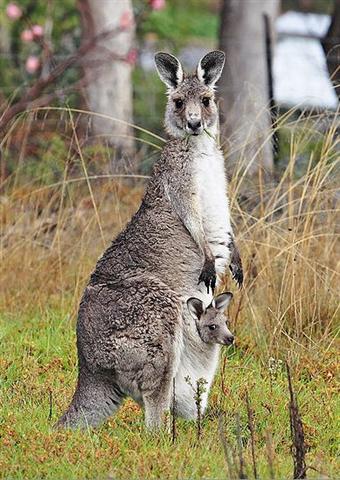
... A very detailed myth comes from the
island of Nauru. In the beginning
there was nothing but the sea, and above
soared the Old-Spider. One day the
Old-Spider found a giant clam, took it up,
and tried to find if this object had any
opening, but could find none.
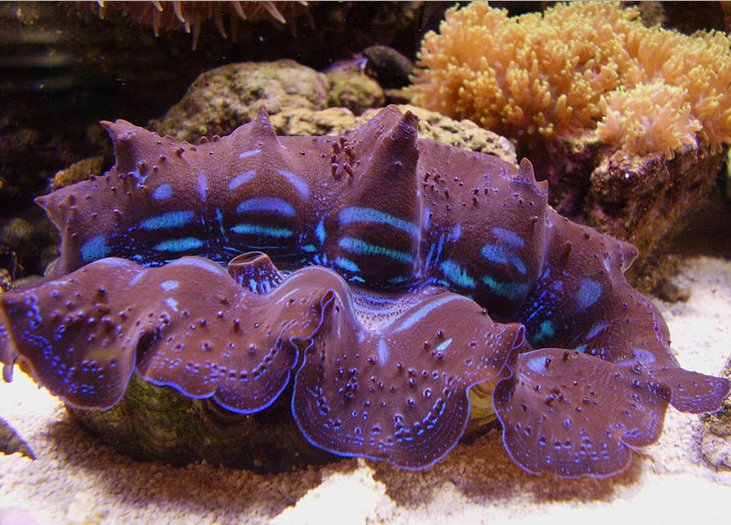
She tapped on it, and as it sounded hollow,
she decided it was empty. By repeating a
charm, she opened the two shells and slipped
inside. She could see nothing, because the
sun and the moon did not then exist; and
then, she could not stand up because there
was not enough room in the shellfish.
Constantly hunting about she at last found a
snail. To endow it with power she placed it
under her arm, lay down and slept for three
days. Then she let it free, and still
hunting about she found another snail bigger
than the first one, and treated it in the
same way. Then she said to the first snail:
'Can you open this room a little, so that we
can sit down?' The snail said it could, and
opened the shell a little. Old-Spider then
took the snail, placed it in the west of the
shell, and made it into the moon.
Then
there was a little light, which allowed
Old-Spider to see a big worm. At her request
he opened the shell a little wider, and from
the body of the worm flowed a salted sweat
which collected in the lower half-shell and
became the sea. Then he raised the upper
half-shell very high, and it became the sky.
Rigi, the worm, exhausted by this great
effort, then died. Old-Spider then made the
sun from the second snail, and placed it
beside the lower half-shell, which became
the earth ...
The idea of quadrupeds and Man needing
powerful, yet flexible, limbs in order to
live on land could have been illustrated
in Cb2-5 (→ 25), at the heliacal stars
of
the Serpent when the Full Moon was at the
Foundation Stone (Temennu), the 3rd
ancient Babylonian station ruled by Alcyone, daughter of the Queen of Sailing:
|
BABYLONIAN ECLIPTIC
CONSTELLATIONS: |
|
26 |
Mahar sha hi-na Shahū |
Western One in the Tail of the
Goat |
γ (Nashira)
Capricorni |
328.0 |
Febr 12 (43) |
|
27 |
Arkat sha hi-na Shahū |
Eastern One in the Tail of the
Goat |
δ (Deneb Algiedi)
Capricorni |
329.8 |
Febr 13 (44) |
|
|
|
0 |
1-iku |
Field measure |
τ
(Anunitum)
Piscium |
16.5 |
April 6 (96) |
|
|
|
1 |
Mahrū-sha-rishu-ku |
Front of the Head of Ku |
β (Sheratan),
γ (Mesarthim) Arietis |
27.4 |
April 17 (107) |
|
2 |
Arku-sha-rishu-ku |
Back of the Head of Ku |
α (Hamal)
Arietis |
30.5 |
April 20 (110) |
|
|
|
3 |
Temennu |
Foundation Stone |
η (Alcyone)
Tauri |
56.1 |
May 16 (136) |
... another Alcyone, daughter of Pleione,
'Queen of Sailing', by the oak-hero Atlas,
was the mystical leader of the seven
Pleiads. The heliacal rising of the Pleiads
in May marked the beginning of the
navigational year; their setting marked its
end when (as Pliny notices in a passage
about the halcyon) a remarkably cold North
wind blows
...
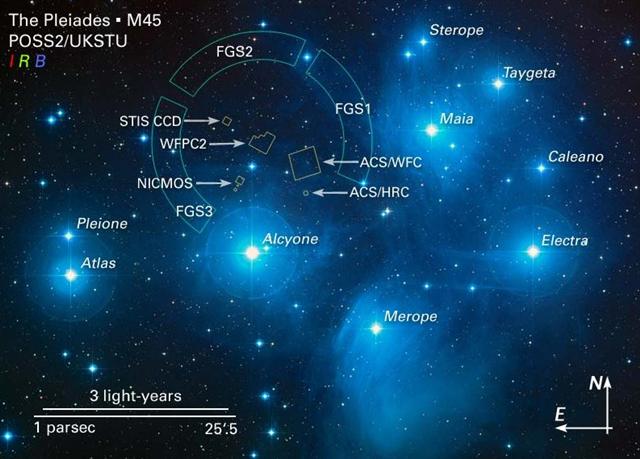
 |
 |
 |
 |
| Cb2-4 (420 = 285 + 135) |
Cb2-5 (392 + 29) |
Cb2-6 (30) |
Cb2-7 (423) |
|
te ua |
koia ra |
kua tuku ki to mata - ki tona tukuga |
e kiore - henua - pa rei |
| INVISIBLY CLOSE TO THE SUN NORTH OF THE EQUATOR: |
| π Cor. Borealis,
UNUK ELHAIA (Necks of the Serpents) = λ Serpentis (238.1), CHOW = β Serpentis (238.6) |
κ Serpentis
(239.3), δ Cor. Borealis, TIĀNRŪ = μ Serpentis (239.5), χ Lupi, (239.6), ω Serpentis (239.7), BA = ε Serpentis, χ Herculis (239.8). κ Cor. Borealis, ρ Serpentis (239.9) |
λ Librae (240.0), β Tr. Austr. (240.3), κ Tr. Austr. (240.4), ρ Scorpii (240.8) |
Iklīl al Jabhah-15 (Crown of the Forehead) / Anuradha-17
(Following rādhā) / Room-4 (Hare) ξ Lupi, λ Cor. Bor.(241.1), ZHENG = γ Serpentis, θ Librae (241.2), VRISCHIKA = π Scorpii (241.3), ε Cor. Borealis (241.5), DSCHUBBA (Front of Forehead) = δ Scorpii (241.7), η Lupi (241.9) |
| Egyptian hand |
 |
Phoenician kaph |
 |
Greek kappa |
Κ (κ) |
|
Kaph is thought to have been derived from a pictogram of a hand (in both modern Arabic and modern Hebrew, kaph means palm/grip) ...
... The manik, with the tzab, or serpent's rattles as prefix, runs across Madrid tz. 22 , the figures in the pictures all holding the rattle; it runs across the hunting scenes of Madrid tz. 61, 62, and finally appears in all four clauses of tz. 175, the so-called 'baptism' tzolkin. It seems impossible, with all this, to avoid assigning the value of grasping or receiving. But in the final confirmation, we have the direct evidence of the signs for East and West. For the East we have the glyph Ahau-Kin, the Lord Sun, the Lord of Day; for the West we have Manik-Kin, exactly corresponding to the term Chikin, the biting or eating of the Sun, seizing it in the mouth.

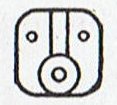 
The pictures (from Gates) show east, north, west, and south; respectively (the lower two glyphs) 'Lord' (Ahau) and 'grasp' (Manik). Manik was the 7th day sign of the 20 and Ahau the last ... |
|
| Nov 14 |
15 |
16 (320 = 137 + 183) |
17 (*241 = *58 + *183) |
| ºNov 10 (314) |
11 |
12 |
13 (*237) |
| 'Oct 18 (108 + 183 = 291) |
19 |
20 |
21 (*214 =*31 + *183) |
| "Oct 4 (277 = 314 - 37) |
5 |
6 |
7 (*200 = *17 + *183) |
| SEPT 11 (254 = 71 + 183) |
12 (365 - 100) |
13 |
14 (*177 = *354 / 2) |
| 234 = 314 - 80 |
235 |
236 = 320 - 84 |
237 (= 8 * 29½ + 1) |

Kiore. Rat. Vanaga. Rat, mouse; kiore hiva, rabbit. P Pau., Mgv.: kiore, rat, mouse. Mq.: kioē, íoé, id. Ta.: iore, id. Churchill. |
|
... All was now ready for departure except that there was no fire in the smithy. The ancestor slipped into the workshop of the great Nummo, who are Heaven's smiths, and stole a piece of the sun in the form of live embers and white-hot iron. He seized it by means of a 'robber's stick' the crook of which ended in a slit, open like a mouth. He dropped some of the embers, came back to pick them up, and fled towards the granary; but his agitation was such that he could no longer find the entrances. He made the round of it several times before he found the steps and climbed onto the flat roof, where he hid the stolen goods in one of the skins of the bellows, exclaiming: 'Gouyo!', which is to say. 'Stolen!'. The word is still part of the language, and means 'granary'. It is a reminder that without the fire of the smithy and the iron of hoes there would be no crops to store ...
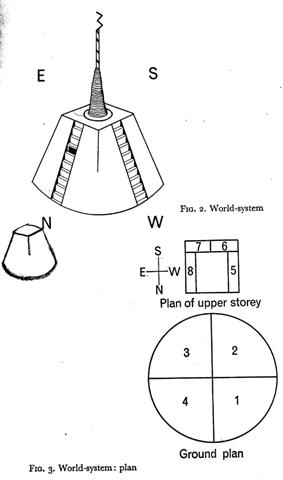
During his descent the ancestor still possessed the quality of a water spirit, and his body, though preserving its human appearance, owing to its being that of a regenerated man, was equipped with four flexible limbs like serpents after the pattern of the arms of the Great Nummo. The ground was rapidly approaching. The ancestor was still standing, his arms in front of him and the hammer and anvil hanging across his limbs. The shock of his final impact on the earth when he came to the end of the rainbow, scattered in a cloud of dust the animals, vegetables and men disposed on the steps. When calm was restored, the smith was still on the roof, standing erect facing towards the north, his tools still in the same position. But in the shock of landing the hammer and the anvil had broken his arms and legs at the level of elbows and knees, which he did not have before.

He thus acquired the joints proper to the new human form, which was to spread over the earth and to devote itself to toil ...
 |
|
May 16 (136) |
|
| CLOSE TO THE FULL MOON ON EASTER ISLAND: |
|
Al Thurayya-27
(Many Little Ones) /
Krittikā-3
(Nurses of Kārttikeya)
/
TAU-ONO
(Six Stones)
ATIKS = ο Persei, RANA
(Frog) = δ Eridani (55.1),
CELAENO (16 Tauri), ELECTRA
(17), TAYGETA (19),
ν Persei (55.3),
MAIA (20), ASTEROPE (21),
MEROPE (23)
(55.6) |
Hairy Head-18
(Cockerel) /
Temennu-3 (Foundation
Stone)
ALCYONE
(56.1),
PLEIONE (28 Tauri),
ATLAS (27) (56.3) |
MENKHIB = ζ Persei (57.6)
PORRIMA (γ Virginis)
|
ZAURAK
(The
Boat) = γ
Eridani
(58.9) |
| 15 (135 + 365 = 500) |
May 16 (136) |
17 |
18 (*58) |
| ºMay 11 |
12 (132) |
13 |
14 (*54) |
| 4-18 (473 = 108 + 365) |
'April 19 |
4-20 |
21 (111) |
| "April 4 |
5 (501 - 41 = 460) |
6 (*16) |
7 |
| MARCH 12 |
13 |
3-14 (73) |
15 |
| 417 (= 501 - 84) |
52 |
53 (= 73 - 20) |
54 (= *58 - 4) |
|
... The Mahabharata insists on six as the number of the Pleiades as well as of the mothers of Skanda and gives a very broad and wild description of the birth and the installation of Kartikeya 'by the assembled gods ... as their generalissimo', which is shattering, somehow, driving home how little one understands as yet. The least which can be said, assuredly: Mars was 'installed' during a more or less close conjunction of all planets; in Mbh. 9.45 (p. 133) it is stressed that the powerful gods assembled 'all poured water upon Skanda, even as the gods had poured water on the head of Varuna, the lord of waters, for investing him with dominion'. And this 'investiture' took place at the beginning of the Krita Yuga, the Golden Age ... |
|
... They go inland at the land. The child nursed and tended grows up, is able to go and play. Each day he now goes off a bit further away, moving some distance away from the house, and then returns to their house. So it goes on and the child is fully grown and goes to play far away from the place where they live. He goes over to where some work is being done by a father and son. Likāvaka is the name of the father - a canoe-builder, while his son is Kiukava. Taetagaloa goes right over there and steps forward to the stern of the canoe saying - his words are these: 'The canoe is crooked.' (kalo ki ama). Instantly Likāvaka is enraged at the words of the child. Likāvaka says: 'Who the hell are you to come and tell me that the canoe is crooked?' Taetagaloa replies: 'Come and stand over here and see that the canoe is crooked.' Likāvaka goes over and stands right at the place Taetagaloa told him to at the stern of the canoe. Looking forward, Taetagaloa is right, the canoe is crooked. He slices through all the lashings of the canoe to straighten the timbers. He realigns the timbers. First he must again position the supports, then place the timbers correctly in them, but Kuikava the son of Likāvaka goes over and stands upon one support. His father Likāvaka rushes right over and strikes his son Kuikava with his adze. Thus Kuikava dies. Taetagaloa goes over at once and brings the son of Likāvaka, Kuikava, back to life. Then he again aligns the supports correctly and helps Likāvaka in building the canoe. Working working it is finished ... |
|
... They all sat down and rested [on the plain of Oromanga], when suddenly they saw that a turtle had reached the shore and had crawled up on the beach. He [Ira] looked at it and said, 'Hey, you! The turtle has come on land!' He said, 'Let's go! Let's go back to the shore.' They all went to pick up the turtle. Ira was the first one to try to lift the turtle - but she didn't move. Then Raparenga said, 'You do not have the necessary ability. Get out of my way so that I can have a try!' Raparenga stepped up and tried to lift the turtle - but Raparenga could not move her. Now you spoke, Kuukuu: 'You don't have the necessary ability, but I shall move this turtle. Get out of my way!' Kuukuu stepped up, picked up the turtle, using all his strength. After he had lifted the turtle a little bit, he pushed her up farther. No sooner had he pushed her up and lifted her completely off the ground when she struck Kuukuu with one fin. She struck downward and broke Kuukuu's spine.The turtle got up, went back into the (sea) water, and swam away. All the kinsmen spoke to you (i.e. Kuukuu): 'Even you did not prevail against the turtle!'
They put the injured Kuukuu on a stretcher and carried him inland. They prepared a soft bed for him in the cave and let him rest there. They stayed there, rested, and lamented the severely injured Kuukuu. Kuukuu said, 'Promise me, my friends, that you will not abandon me!' They all replied, 'We could never abandon you!' They stayed there twenty-seven days in Oromanga. Everytime Kuukuu asked, 'Where are you, friends?' they immediately replied in one voice, 'Here we are!' They all sat down and thought. They had an idea and Ira spoke, 'Hey, you! Bring the round stones (from the shore) and pile them into six heaps of stones!' One of the youths said to Ira, 'Why do we want heaps of stone?' Ira replied, 'So that we can all ask the stones to do something.' They took (the material) for the stone heaps (pipi horeko) and piled up six heaps of stone at the outer edge of the cave. Then they all said to the stone heaps, 'Whenever he calls, whenever he calls for us, let your voices rush (to him) instead of the six (of us) (i.e., the six stone heaps are supposed to be substitutes for the youths). They all drew back to profit (from the deception) (? ki honui) and listened. A short while later, Kuukuu called. As soon as he had asked, 'Where are you?' the voices of the stone heaps replied, 'Here we are!' All (the youths) said, 'Hey, you! That was well done!' ... |
|
... Vainamoinen set about building a boat, but when it came to the prow and the stern, he found he needed three words in his rune that he did not know, however he sought for them. In vain he looked on the heads of the swallows, on the necks of the swans, on the backs of the geese, under the tongues of the reindeer. He found a number of words, but not those he needed. Then he thought of seeking them in the realm of Death, Tuonela, but in vain. He escaped back to the world of the living only thanks to his potent magic. He was still missing his three runes. He was then told by a shepherd to search in the mouth of Antero Vipunen, the giant ogre. The road, he was told, went over swords and sharpened axes. Ilmarinen made shoes, shirt and gloves of iron for him, but warned him that he would find the great Vipunen dead. Nevertheless, the hero went. The giant lay underground, and trees grew over his head. Vainamoinen found his way to the giant's mouth, and planted his iron staff in it. The giant awoke and suddenly opened his huge mouth. Vainamoinen slipped into it and was swallowed. As soon as he reached the enormous stomach, he thought of getting out. He built himself a raft and floated on it up and down inside the giant. The giant felt tickled and told him in many and no uncertain words where he might go, but he did not yield any runes. Then Vainamoinen built a smithy and began to hammer his iron on an anvil, torturing the entrails of Vipunen, who howled out magic songs to curse him away. But Vainamoinen said, thank you, he was very comfortable and would not go unless he got the secret words. Then Vipunen at last unlocked the treasure of his powerful runes. Many days and nights he sang, and the sun and the moon and the waves of the sea and the waterfalls stood still to hear him. Vainamoinen treasured them all and finally agreed to come out. Vipunen opened his great jaws, and the hero issued forth to go and build his boat at last ...
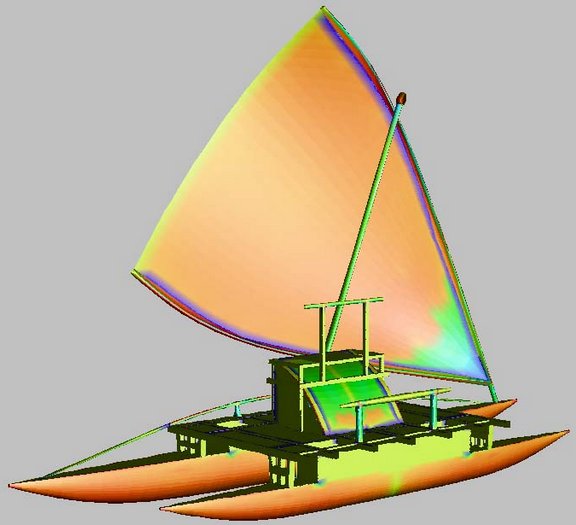
|
A pair of niu (coconut shoots) glyphs could have been used to illustrate where the time of the Flood transformed into the time of Terra Firma (ebb): 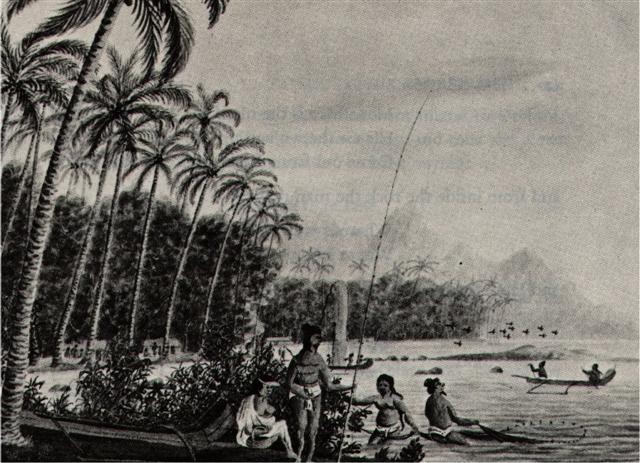
The tidal cycle went twice in
the diurnal cycle and 227 (π) had to be used
twice in order to measure the path of the
Sun.
 |
 |
 |
| Cb2-8 (392 + 32) |
Cb2-9 (425 = 365 + 60) |
Cb2-10 (407 + 19) |
| Niu |
moe te goe |
 |
55 |
 |
| Cb2-10 (426) |
Aa6-66 (482) |
|
moe te goe |
e he goe kua moe |
Goe. Milky Way. Vanaga.
 |
 |
| mago |
Cb2-10 |
Mago. Spotted dogfish, small shark. Vanaga. Mogo, shark. P Pau.: mago, id. Mgv. mago, id. Mq. mano, mako, mono, moko id. T. maó, id. In addition to this list the word is found as mago in Samoa, Maori, Niuē, and in Viti as mego. It is only in Rapanui and the Marquesas that we encounter the variant mogo. Churchill.Goe. Milky Way. Vanaga.
 |
 |
326 |
 |
38 |
| Toki |
Ga2-1 |
Cb2-5 |
| CANOPUS (*95) |
ALCYONE (*56) |
Toki. Small basalt axe. Vanaga. Stone adze. Van Tilburg. Ha'amoe ra'a toki = 'Put the adze to sleep' (i.e. hide it in the temple during the night). Barthel. Month of the ancient Rapanui calendar. Fedorova according to Fischer. To'i. T. Stone adze (e to'i purepure = with the wounderful adze). Henry. The Araukan Indians in the coastal area of northern Chile, have customs similar to those on the Marquesas and in both areas toki means adze according to José Imbelloni. The Araukans also called their chief of war toki and the ceremonial adze symbolized his function and was exhibited at the outbreak of war. In Polynesia Toki was the name of a chief elevated by the Gods and his sign was the blade of a toki. Fraser. Axe, stone hatchet, stone tool ...; maea toki, hard slates, black, red, and gray, used for axes T. P Pau.: toki, to strike, the edge of tools, an iron hatchet. Mgv.: toki, an adze. Mq.: toki, axe, hatchet. Ta.: toi, axe. Churchill. A Maori saying: he iti toki, e rite ana ki te tangata = though the adze be small, yet does it equal a man. (Starzecka) |
| INVISIBLY CLOSE TO THE SUN NORTH OF THE EQUATOR: |
| υ Herculis (242.3), ρ Cor. Borealis (242.4), ι Cor. Borealis (242.5), θ Draconis (242.6), ξ Scorpii (242.7) SCHEDIR (α Cassiopeiae)
|
16h (243.5)
ACRAB = β Scorpii, JABHAT AL ACRAB (Forehead of the Scorpion) = ω Scorpii (243.3), θ Lupi, RUTILICUS = β Herculis (243.5), MARFIK (Elbow) = κ Herculis (243.7), φ Herculis (243.8) |
ψ Scorpii (244.6), LESATH (Sting) = ν Scorpii (244.8) |
| Nov 18 (*242 = 2 * 11 * 11) |
19 (*243 = 3 * 3 * 3 * 3 * 3) |
20 (324) |
| ºNov 14 |
15 |
16 (*240) |
| 'Oct 22 (295) |
23 (*216 = 3 * 72) |
24 |
| "Oct 8 (281) |
9 |
10 |
| SEPT 15 |
16 (*179) |
17 (260 = 324 - 64) |
| 238 |
239 |
240 = 260 - 20 |
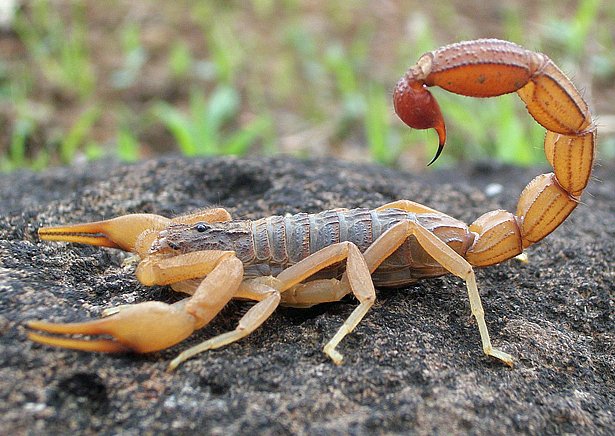 |
| CLOSE TO THE FULL MOON ON EASTER ISLAND: |
| λ Tauri (59.3), ν Tauri (59.9) |
4h (60.9)
JĪSHUĬ (Piled-up Waters) = λ Persei (60.7)
COR CAROLI (α Canum Ven.)
|
υ Persei (61.2) |
| Egyptian cobra in repose |
 |
Phoenician nūn |
 |
Greek nu |
Ν (ν) |
|
... Nun is thought to have come from a pictogram of a snake (the Hebrew word for snake, nachash begins with a Nun and snake in Aramaic is nun) or eel.
Some have hypothesized a hieroglyph of a fish in water for its origin (in Arabic, nūn means large fish or whale). The Phoenician letter was named nūn 'fish', but the glyph has been suggested to descend from a hypothetical Proto-Canaanite nah 'snake', based on the name in Ethiopic, ultimately from a hieroglyph representing a snake.
... Nah in modern Arabic literally means 'bad luck'. The cognate letter in Ge'ez and descended Semitic languages of Ethiopia is nehas, which also means 'brass'. |
|
| May 19 (*59) |
20 (140) |
21 (*61 = *45 + *16) |
| ºMay 15 (*55) |
16 (136) |
17 |
| 'April 22 (*32) |
23 (113) |
24 |
| "April 8 |
9 (99 + 365 = 464) |
10 (*20) |
| MARCH 16 (75 = 80 - 5) |
17 (*361 = 464 - 80 - 23) |
18 (77 = *362 + 80 - 365) |
| 55 |
56 |
57 = 77 - 20 = 141 - 84 |
And we should here also remember:
| Julius Caesar (nighttime) |
373 |
Gregory XIII (daytime) |
 |
 |
 |
 |
| Ca2-24 (50) |
Ca2-25 |
Cb2-8 (24 + 8 = 32) |
Cb2-9 (426) |
| niu - kupega hia mai |
tu te niu - ku huki |
Niu |
| CLOSE TO THE FULL MOON |
INVISIBLY CLOSE TO THE SUN |
| ALGENIB PERSEI |
May 11 (314 - 183, *51) |
Nov 19, 16h (243.5) |
LESATH (324) |
| 'April 13 (→ 413) |
4-14 (→ 41.4) |
ºNov 15 |
16 (320 = 260 + 60) |
| "March 30 (*50 - *41) |
31 (90 = 131 - 41) |
"Oct 9 (*202) |
10 (90 + 375 - 182) |
| 3-7 (*352 = *366 - 14) |
MARCH 8 (67 = 80 - 13) |
SEPT 16 |
17 (260 = 324 - 64) |
| 46 (= 130 - 84) |
47 = 67 - 20 |
239 (= 47 + 374 - 182) |
240 (= 324 - 84) |
| 377 = 273 + 104 = 3 * 91 + 4 * 26 (= 13 * 29) |
|
The difference in precessional time depth between the Pope and Julius Caesar was *27 - *4 = *23. This means *324 (Lesath) - *51 (Ca2-25) = *273 (→ September 30) = 3 * 91 = 182 + 91. |
|
... The ordinary year in the previous Roman calendar consisted of 12 months, for a total of 355 days. In addition, a 27-day intercalary month, the Mensis Intercalaris, was sometimes inserted between February and March. This intercalary month was formed by inserting 22 days after the first 23 or 24 days of February; the last five days of February, which counted down toward the start of March, became the last five days of Intercalaris. The net effect was to add 22 or 23 days to the year, forming an intercalary year of 377 or 378 days ...
740 (total number of glyphs on the C tablet) - 377 = 363 (= 3 * 121). And 377 - 23 = 354 (= 12 * 29½). If, however, also the day of Sirrah at position zero in the text should be counted, then 1 + 740 = 741 = 19 * 39 = 364 + 377. |

|




















